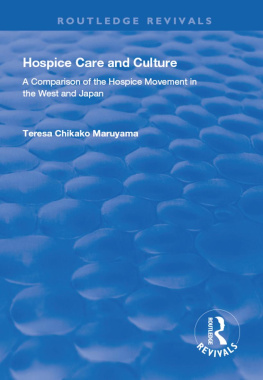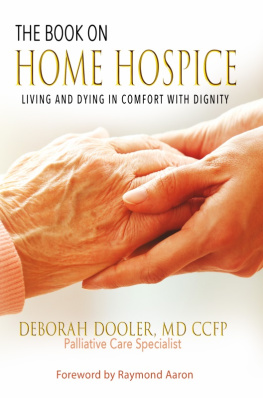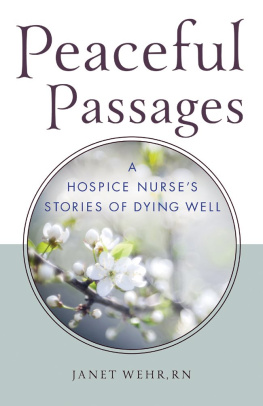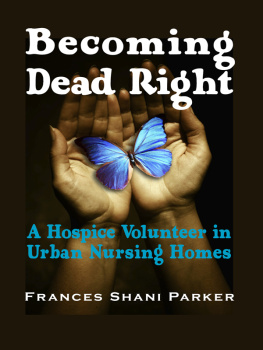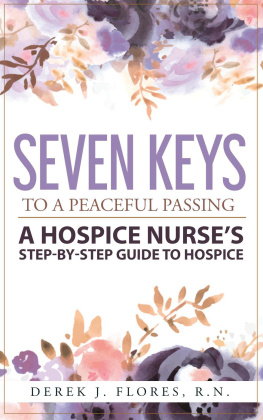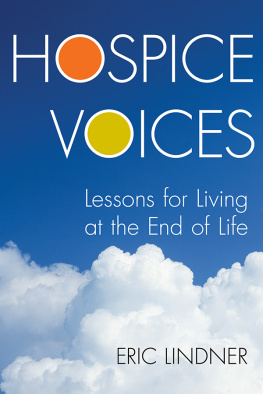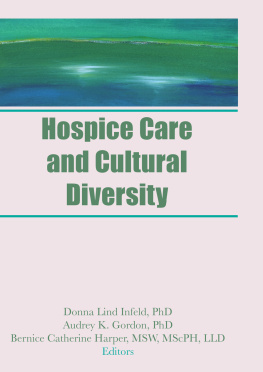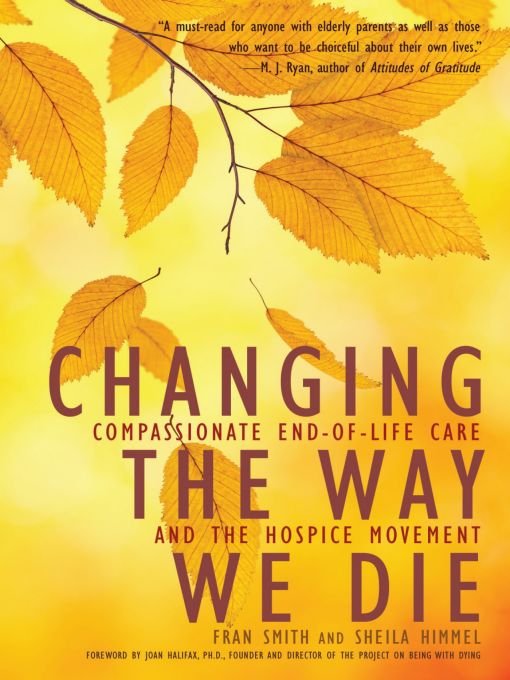Table of Contents
Praise for Changing the Way We Die
As a former hospice volunteer, I am thrilled to recommend Changing the Way We Die. Finally theres a spotlight on a crucial conversation that has the potential to reduce the suffering of millions of people at the end of life. A must-read for anyone with elderly parents as well as those who want to be choiceful about their own lives.
M. J. Ryan,
author of Attitudes of Gratitude and The Power of Patience
Hospice is one of the truly humane innovations in our culture, and Changing the Way We Die not only shows why, it demonstrates the importance of treating death as part of the great mystery and privilege of being alive.
Sue Halpern,
author of A Dog Walks into a Nursing Home
My interest in the hospice concept began in 1978, and hospice has been my passion ever since. I watched and participated in its birth and have grown right along with its continued evolution. When I started reading Changing the Way We Die, Sheila and Fran had me from the introduction, and I was riveted to the last page. The book is thoroughly researched and documented. It is a comprehensive look at the hospice movement from its idealistic inception in the 1970s to today with its many challenges.
Changing the Way We Die is accurate and detailed. What lies upon its pages so needs to be said, examined, and hopefully addressed. I highly recommend this read for anyone directly or indirectly involved with end-of-life issues. I guess that means everyone, since all of us have to deal with the end of life sometime, for ourselves or those we care about.
Barbara Karnes, R.N.,
author of Gone from My Sight: The Dying Experience
(The Hospice Blue Book)
There is nothing to be afraid of within the pages of Changing the Way We Die, but there is a great deal to be learned. Using compelling stories about people from all walks of life, this book offers a preparatory primer for people contemplating the final chapter of life for themselves or their loved ones. It will also help those who struggle to understand the medical care that their loved ones receive in their later days. And it provides a calm and persuasive case for greater compassion toward people who are seriously ill, and those who care for them. If you invest a few hours in reading this book, it will help you avoid months of suffering for people you love in the days to come.
Stephen P. Kiernan,
author of Last Rights: Rescuing the End of Life from the Medical System
For an experience that is universal, the act of dying remains one of the least discussed aspects of American life. Changing the Way We Die is a welcome addition to a growing body of work that documents the benefits of hospice care. Inspired by the very different deaths of their fathers, journalists Fran Smith and Sheila Himmel embarked on an investigation of what is now a $14 billion industry, interviewing patients, survivors, and providers, and asking those at the doorstep of death: What do you want to do with the rest of your life? For even the frailest and sickest, there are choices. Enhancing the quality of life that remains is the principle of hospice, and this book is a valuable contribution toward the authors goal of lifting hospice out of the shadows.
Eleanor Clift,
author of Two Weeks of Life: A Memoir of Love, Death, and Politics
Changing the Way We Die honors patients, their families, their cultures, and their values. Many misunderstood concerns about dying are addressed. Most of all, this book celebrates the end-of-life dignity to which every person is entitled. I highly recommend this enlightening resource that adds significant layers of practical knowledge to death journeys everyone will experience.
Frances Shani Parker,
author of Becoming Dead Right: A Hospice Volunteer
in Urban Nursing Homes
A wonderful book full of captivating stories of peoples lives. Fran Smith and Sheila Himmel tell the marvelous story of the history of hospice and rightly raise concerns about its destiny. As a clinician with almost thirty years of hospice and palliative care involvement, I urge readers to dig in, appreciate the writing, and learn from the lessons shared here.
Perry G. Fine, M.D., author of The Hospice Companion
With almost four decades of steady growth since the first U.S. hospice program opened in New Haven, misconceptions still abound about this model of care designed to make lifes final chapter free of pain, peaceful, and fulfilling. Patients, families, and many clinicians still think it is a place where you go to dieand only after you have given up all hope for the quality of remaining lifeinstead of a highly skilled care team that comes to your home. The cost of those misconceptions is untold pain and suffering for patients receiving futile medical treatments in hospitals and ICUs, and the frequent complaint, Why didnt we know about hospice sooner? Changing the Way We Die: Compassionate End-of-Life Care and the Hospice Movement attempts to shed light on these murky misconceptions with lots of stories about real people. Starting with their own fathers deaths, one with hospice and one without, the authors make it clear that dying is usually messy, ambiguous, and difficult. But thats our birthright. They also show the ways that hospice can make the final chapter a time of poignant and meaningful farewells and wrap-ups.
They emphasize hospice as a way to livenot a failure, but an inevitable passageonce we acknowledge that dying is not if but when. Finally, they delve into the unfortunate current complexities of profit-driven hospice companies and government crackdowns on hospice profiteeringboth of which make it harder for the terminally ill to get the right help at the right time. But armed with the information in this book, readers may be better equipped to make choices that could allow the richness of living at the end of life that hospice at its best can help to facilitate.
Larry Beresford,
medical journalist and author of The Hospice Handbook
For our parents,
Dorothy and Carl Smith
Elaine and David Highiet
foreword
THIS BEAUTIFUL BOOK OPENS THE LID ON ONE OF THE most important treasures in our liveshow we can change the way we die. Changing the Way We Die reminds us that we often can choose to enter the embrace of hospice, with its deep roots in the heart of compassionate care.
Hospice in the United States has been a movement as well as a practice. Dedicated, sensitive professionals and volunteers bring love and care to those who are facing death, in their homes, hospital rooms, and freestanding hospices.
The words of patients and hospice people that fill this book reflect great wisdom and self-honesty. They are a testament to the vision of Dr. Cicely Saunders, the founder of the first modern hospice, St. Christophers, in England.
I was honored in 1972 to spend time in St. Christophers with Dr. Saunders. Hospice was just beginning to find a footing in the States. It is now a global practice and has given death the dignity it deserves.
I am grateful to the authors of this inspiring book.
Joan Halifax, Ph.D.
Upaya Zen Center
Santa Fe, New Mexico


